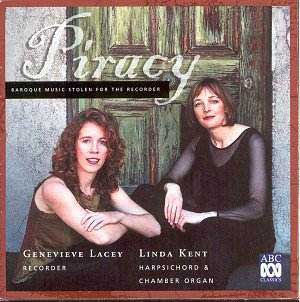 Composer: Jacques Duphly
Composer: Jacques Duphly
Works: Pieces de Clavecin – Chaconne (3ème livre), La Pothoüin. Rondeau (4ème livre), La de la Tour (3ème livre), Menuets (3ème livre), La de Belombre (3ème livre), La du Buq (4ème livre), La Millettina (1er livre), Allemande (1er livre), Médée (3ème livre), La Forqueray (3ème livre), La de Vaucanson (4ème livre), La Tribolet (1er livre), Cazamajor (1er livre), La de Villeneuve (3ème livre), La Lanza (2ème livre)
Performers: Mitzi Meyerson, harpsichord
Recording: January 2001, Kammermusiksaal, Friedenau
Label: MDG
Jacques Duphly, a notable yet often overshadowed figure in the 18th-century French harpsichord repertoire, presents a world that straddles the waning Baroque period and the burgeoning Classical era. His output, modest in number yet rich in character, invites listeners into a realm where the ornate flourishes of François Couperin and the robust structures of Jean-Philippe Rameau coalesce. Duphly’s pieces, more than mere musical exercises, reflect the cultural vibrancy of pre-Revolutionary France, serving as intimate snapshots of a society poised on the brink of monumental change.
Mitzi Meyerson’s interpretation of Duphly’s “Pieces de Clavecin” showcases her adept command over the harpsichord, particularly in works like the lively “Chaconne” from the 3rd book and the intricate “La de Belombre.” Her performance radiates a graceful fluency, navigating the demanding ornamentation with finesse. The “Menuets,” characterized by their rhythmic elegance, display a delightful interplay of lightness and depth, revealing Meyerson’s ability to balance the harpsichord’s tonal nuances. The lyrical “Allemande” emerges as a highlight, where she employs a subtle rubato that adds emotional weight without sacrificing structural integrity. Each piece unfolds with a narrative quality, underpinned by her thoughtful articulations.
The recording, however, presents a double-edged sword. While the reverberation in the Kammermusiksaal imbues the performance with a sense of space, it also muddles the clarity in busier passages. For instance, the opening “Chaconne” suffers from this over-reverberation, resulting in a somewhat confused texture that detracts from Duphly’s intricate lines. MDG’s assertion of a natural sound without artificial enhancements may contribute to this issue; the engineering choices seem to favor ambiance over precision. In contrast, the more straightforward “Menuets” benefit from a clearer sonic picture, allowing Meyerson’s artistry to shine through more effectively.
Comparisons to other recordings of Duphly’s work reveal that, while Meyerson’s interpretation is commendable, it does not quite reach the heights of some contemporaneous renditions that achieve a more balanced sound. The recordings of harpsichordists like Christophe Rousset or Pierre Hantaï, for instance, offer not only clarity but also a dynamic range that enhances the expressive potential of this repertoire.
Mitzi Meyerson’s performance is a commendable exploration of Duphly’s charming, if underappreciated, works. Her interpretation is marked by elegance and stylistic awareness, capturing the essence of this music while revealing its inherent beauty. The recording, despite its flaws in sound quality, still offers a valuable entry point into Duphly’s distinct sound world. It is a release that, for all its shortcomings in engineering, deserves attention for the artistry it encapsulates.



